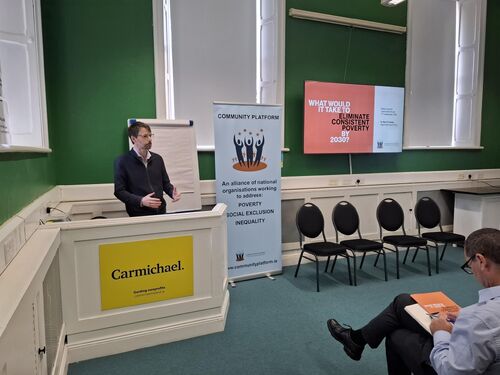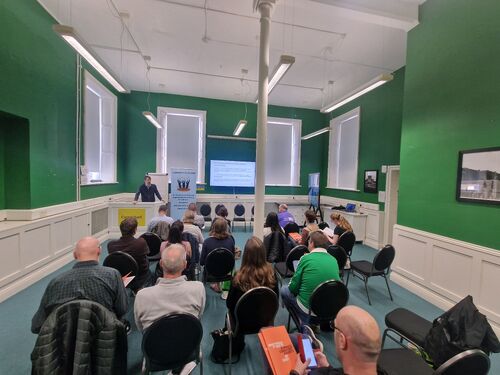 On September 17th, 2024 in Carmichael House, Dublin, the Community Platform, an alliance of 31 national networks and organisations in the community and voluntary sector, launched its new report ‘What Would it Take to Eliminate Consistent Poverty by 2030?’ The report’s author was Dr Nat O’Connor from Age Action Ireland and the UCD School of Social Policy, Social Work and Social Justice.
On September 17th, 2024 in Carmichael House, Dublin, the Community Platform, an alliance of 31 national networks and organisations in the community and voluntary sector, launched its new report ‘What Would it Take to Eliminate Consistent Poverty by 2030?’ The report’s author was Dr Nat O’Connor from Age Action Ireland and the UCD School of Social Policy, Social Work and Social Justice.
Drawing on the collective expertise of the Platform’s members – community and voluntary sector organisations working to address poverty, social exclusion and inequality – the report provides key insights into the root causes and structural reasons for consistent poverty, and the groups most commonly affected. Crucially, it identifies key solutions and provides recommendations to eliminate consistent poverty, and calls on the political and policy making systems to commit to the elimination of consistent poverty.
At the beginning of the report it states that “Ireland has been both a leader and a laggard in addressing poverty. The state led in the past by setting quantitative targets to reduce poverty, but the state has also narrowed its definition of poverty and repeatedly failed to achieve its own targets.” (p3)
According to the Survey of Income and Living Conditions (SILC) 2023, published by the Central Statistics Office (CSO) earlier this year, the consistent poverty rate, which captures people who are at-risk-of-poverty and experience deprivation, was 3.6%. The CSO also noted that the at-risk-of-poverty rate was 10.6%. However, if the cost of living measures were excluded from this figure, the at-risk-of-poverty rate would have increased over the year to 13%. The CSO notes that the “enforced deprivation rate is the percentage of persons that are considered to be marginalised or deprived because they live in households that cannot afford goods and services which are considered to be the norm for other households in society.” In 2023 the deprivation rate was 17.3%.
The Community Platform’s report notes that “Currently, Ireland has a national target to reduce ‘consistent poverty’ to 2% or less by 2025 (down from 5.6% in 2018), with a particular focus on reducing the number of children in consistent poverty.” (p3)
On page five the report states that “Consistent poverty cannot be fully understood from just the available survey statistics. That is why this report also includes quotations from people who experience poverty in their daily lives, and from people who work directly with them.” The report draws on the lived experiences of people published in two reports: (i) ATD Ireland’s recent report, Breaking Barriers: A Participatory Approach to Defining Socio-Economic Discrimination in Real Terms , and (ii) Age Action’s recent report, Spotlight on Income in Older Age . In Breaking Barriers one person stated that “It’s like having a book in front of you and you judge that book by the cover, but you never got the chance to read it — or speak to the person to see who they are, what they’re really like.”
The Community Platform’s report contains six recommendations including:
- Commit to the eradication of consistent poverty by 2030.
- Develop and implement an anti-poverty strategy, along the lines proposed by the Community Platform.
- Acknowledge and address the structural reasons why some people are more likely to be in poverty, including gender, age (including being a child), being a lone parent, domestic abuse, disability, Deaf/Irish Sign Language users, educational disadvantage, living in a disadvantaged area, housing tenure, long-term unemployment, living alone, ethnicity (including being a Traveller or Roma), being an immigrant, and living in adverse circumstances such as homelessness or a mental health crisis.
- Ensure there is a route out of poverty for those who are unable to secure an adequate income from work, or who are unable to work due to disability, parenting, unpaid caring, discrimination or simply the lack of opportunities where they live.
- Lower wealth inequality, such as through progressive wealth taxation and greater investment in public housing.
- Better coordinate and target income supports and public services to reduce the incidence of material deprivation.